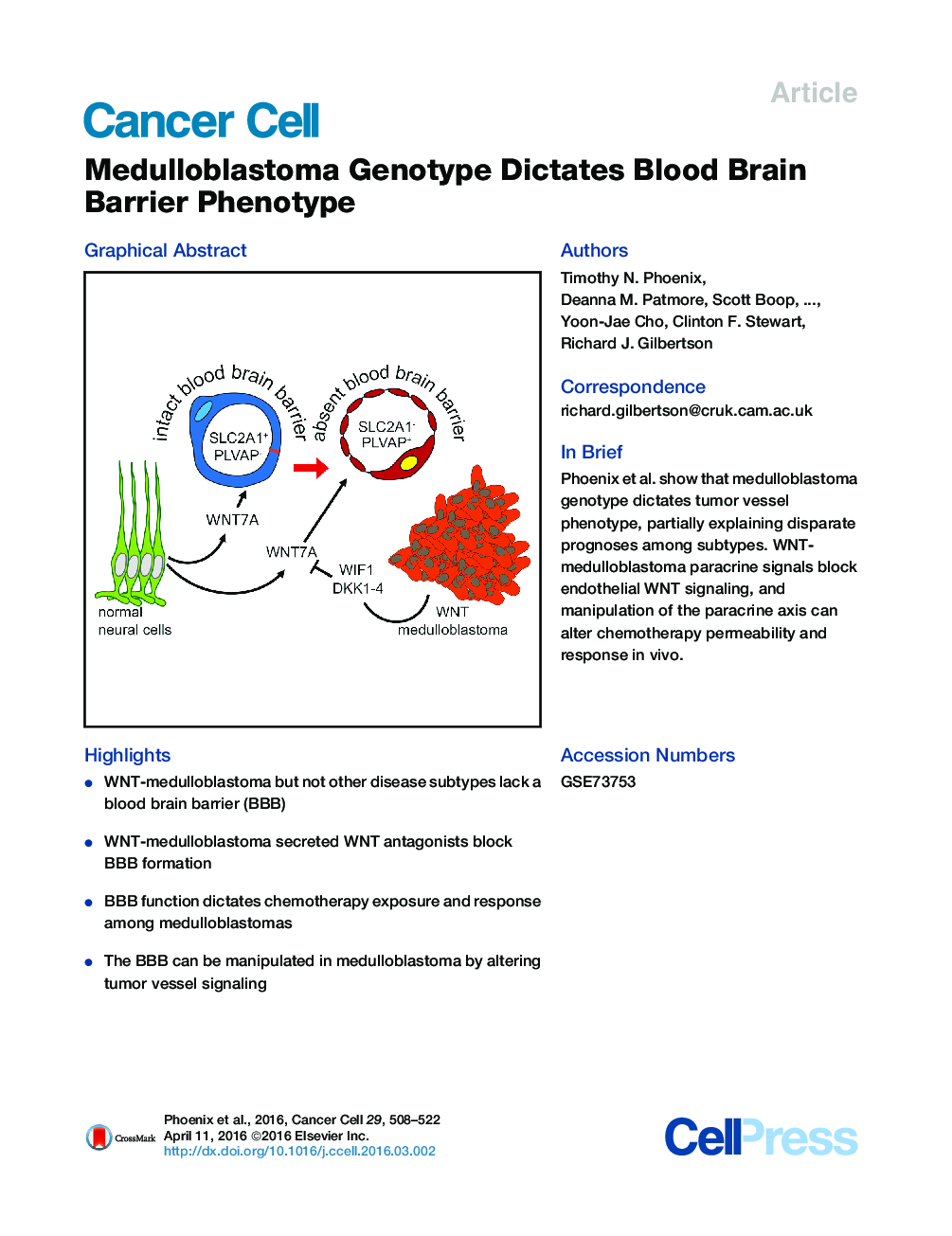| Article ID | Journal | Published Year | Pages | File Type |
|---|---|---|---|---|
| 2106773 | Cancer Cell | 2016 | 15 Pages |
•WNT-medulloblastoma but not other disease subtypes lack a blood brain barrier (BBB)•WNT-medulloblastoma secreted WNT antagonists block BBB formation•BBB function dictates chemotherapy exposure and response among medulloblastomas•The BBB can be manipulated in medulloblastoma by altering tumor vessel signaling
SummaryThe childhood brain tumor, medulloblastoma, includes four subtypes with very different prognoses. Here, we show that paracrine signals driven by mutant β-catenin in WNT-medulloblastoma, an essentially curable form of the disease, induce an aberrant fenestrated vasculature that permits the accumulation of high levels of intra-tumoral chemotherapy and a robust therapeutic response. In contrast, SHH-medulloblastoma, a less curable disease subtype, contains an intact blood brain barrier, rendering this tumor impermeable and resistant to chemotherapy. The medulloblastoma-endothelial cell paracrine axis can be manipulated in vivo, altering chemotherapy permeability and clinical response. Thus, medulloblastoma genotype dictates tumor vessel phenotype, explaining in part the disparate prognoses among medulloblastoma subtypes and suggesting an approach to enhance the chemoresponsiveness of other brain tumors.
Graphical AbstractFigure optionsDownload full-size imageDownload high-quality image (196 K)Download as PowerPoint slide
